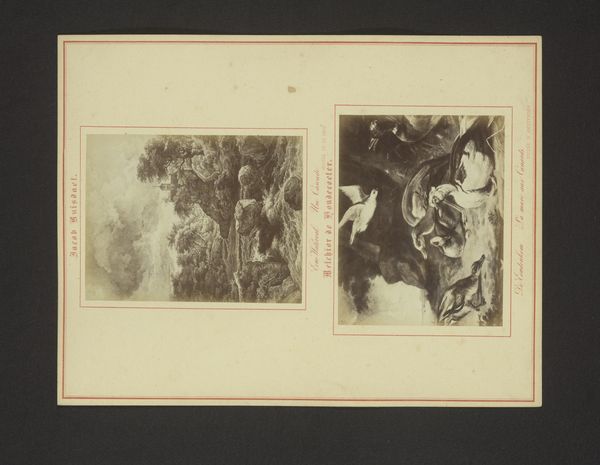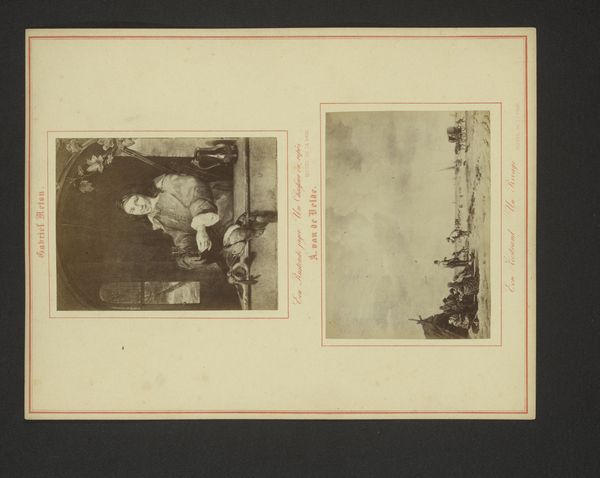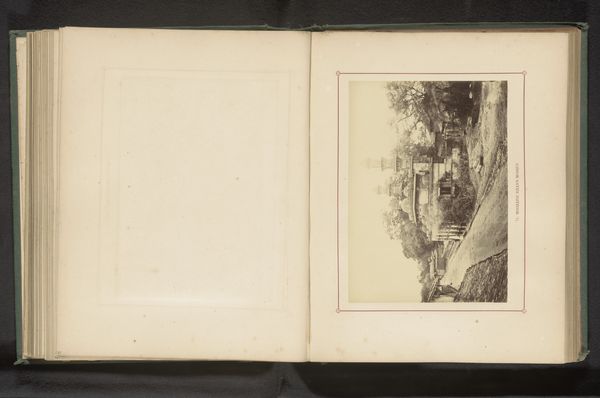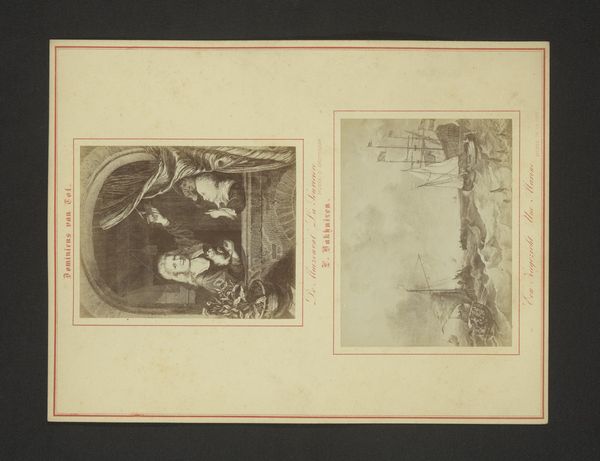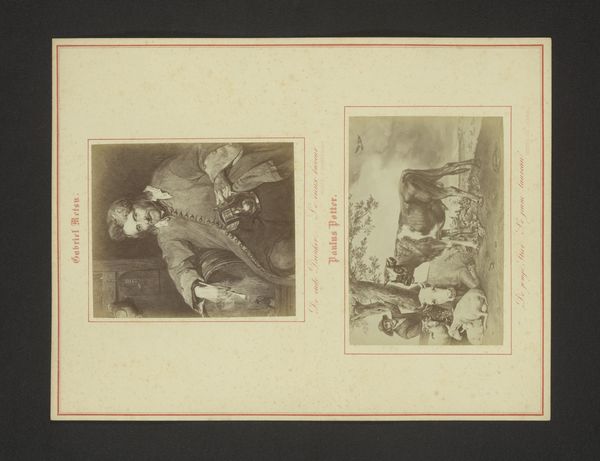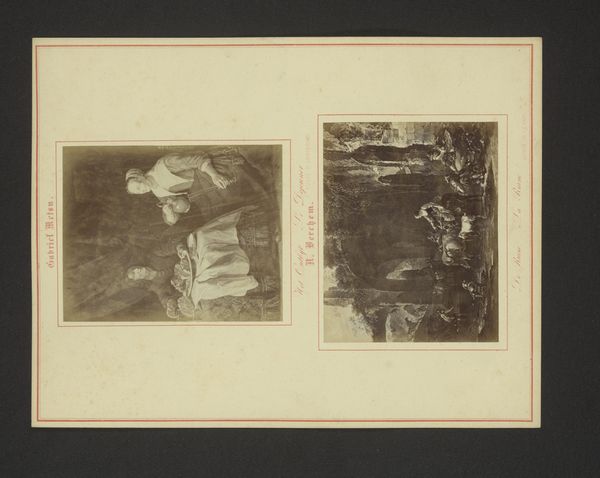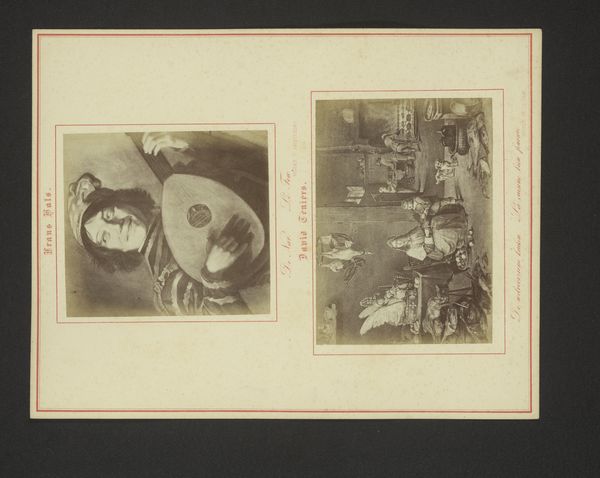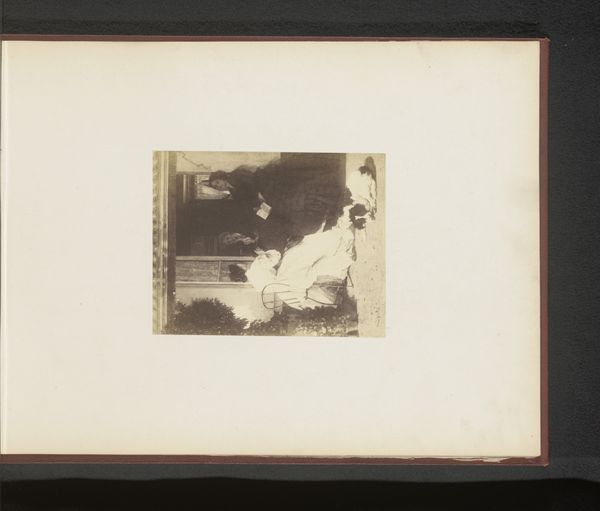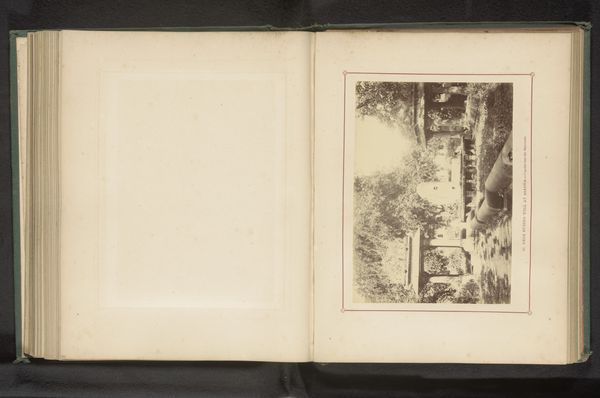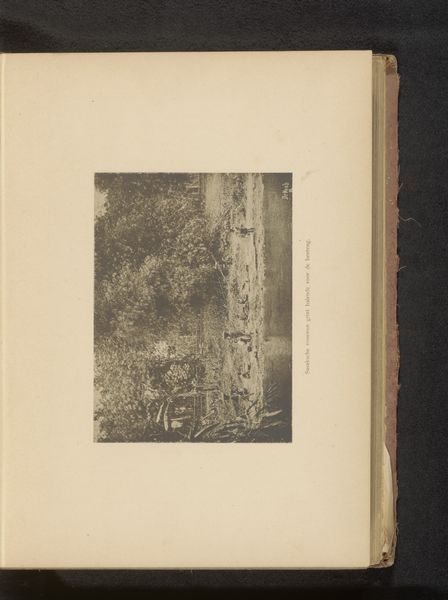
Fotoreproducties van Het prinsesje door Paulus Moreelse en Een watermolen door Meindert Hobbema c. 1866 - 1874
0:00
0:00
print, photography
#
portrait
#
aged paper
#
homemade paper
#
paper non-digital material
#
paperlike
# print
#
light coloured
#
landscape
#
paper texture
#
photography
#
folded paper
#
paper medium
#
design on paper
#
historical font
Dimensions: height 121 mm, width 92 mm, height 85 mm, width 129 mm
Copyright: Rijks Museum: Open Domain
Curator: At first glance, the stark juxtaposition of these photographic prints strikes me. The composition seems divided, yet unified by the texture of the aged paper, lending the entire piece a unique historical quality. Editor: Indeed. What we have here is an interesting artifact dating from 1866-1874 titled "Fotoreproducties van Het prinsesje door Paulus Moreelse en Een watermolen door Meindert Hobbema", consisting of photographic prints of two different artworks mounted on a single paper support. This juxtaposition invites us to consider the function of reproductive technologies at the time. Curator: Note how the sepia tones create a nostalgic atmosphere. On the left, a portrait exudes a formal, almost aristocratic air, with meticulous detail in the subject's attire, while on the right, the landscape evokes a more rustic, tranquil mood. Editor: It's precisely this tension between portraiture and landscape, between the human figure and the natural world, that fascinates me. Consider the labor involved in creating and disseminating these photographic reproductions. The rise of photography allowed for wider distribution of art images to a growing middle class. Curator: From a formal standpoint, observe the symmetry of the layout; each image, although distinct, balances the other. The contrasting subjects of the portrait with an almost staged appearance, and the pastoral landscape, engage in a silent dialogue. The textures, from the ruff of the princess to the foliage of the watermill, possess an independent value, almost tactile in the print. Editor: Agreed. But we cannot separate these images from their socio-economic context. Who was consuming these photographic prints, and what did they signify? Were these markers of status, signifiers of good taste or something else entirely? The paper itself tells a story. Its materiality – likely homemade, now aged and slightly uneven – hints at its origins, and the means of its production. Curator: Your materialist lens always brings such intriguing elements to light. For me, however, the composition achieves something that transcends mere historical documentation. There’s a harmony in how the formal elements of both pictures enhance each other. Editor: And that, of course, leads to how cultural consumption and societal structure were intertwined... Still, the power of observing and analyzing an object with such distinct characteristics provides the opportunity for interpretations that enhance the viewer's appreciation of our past. Curator: Yes, appreciating the balance between form and context can provide rich insights into these “Fotoreproducties”.
Comments
No comments
Be the first to comment and join the conversation on the ultimate creative platform.
